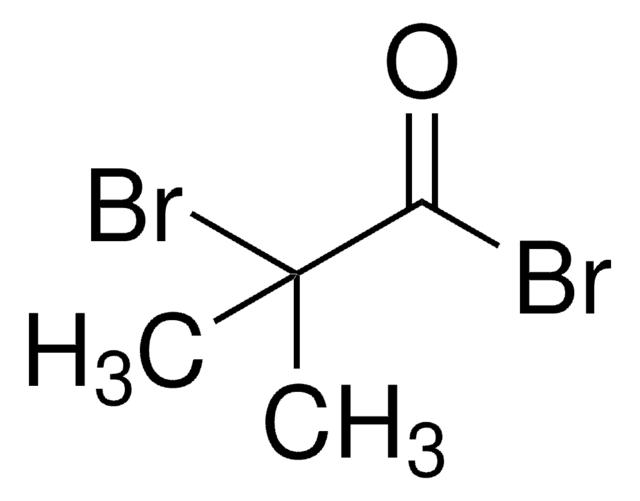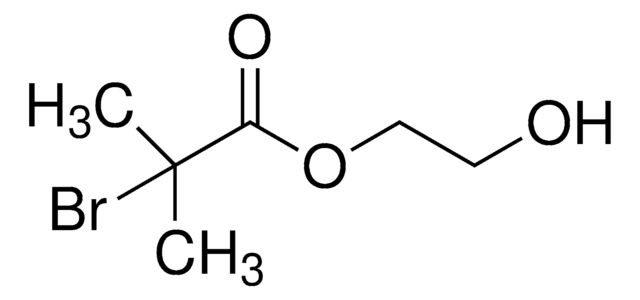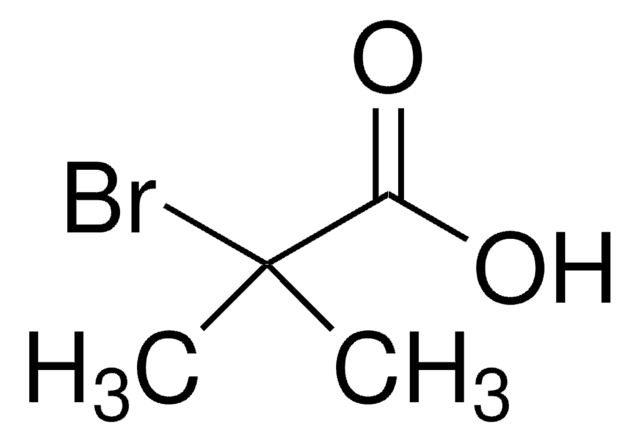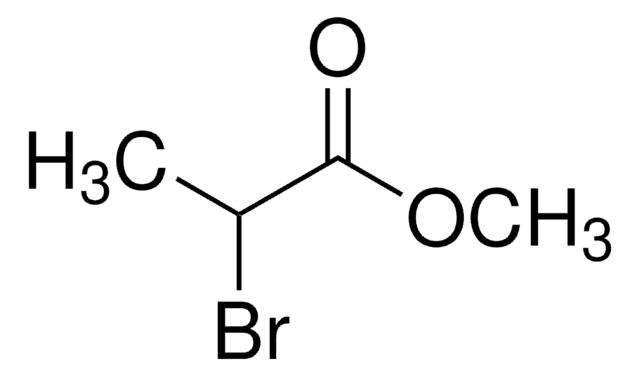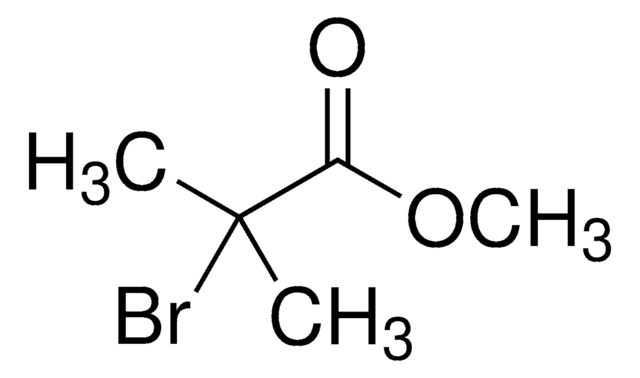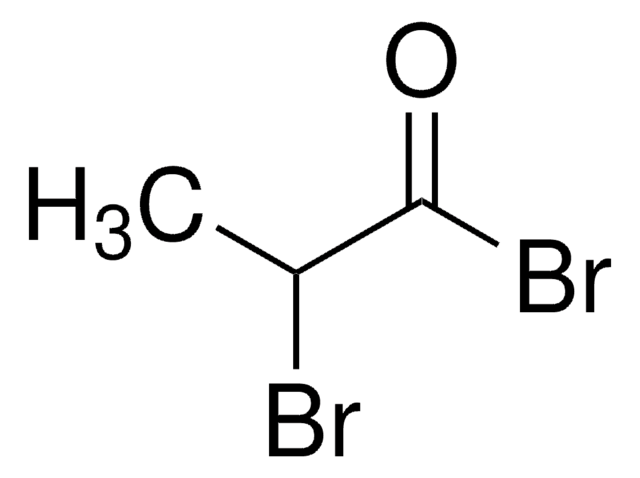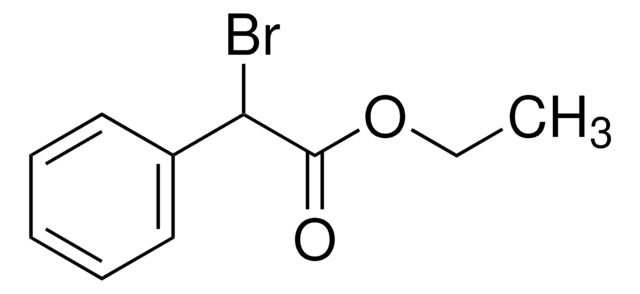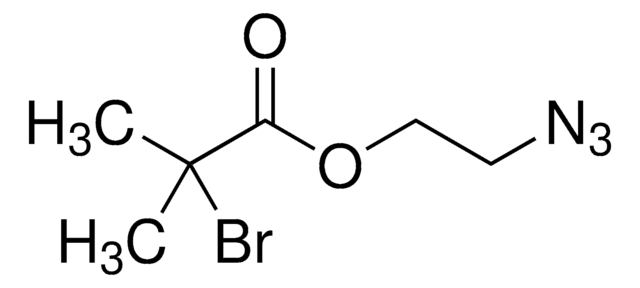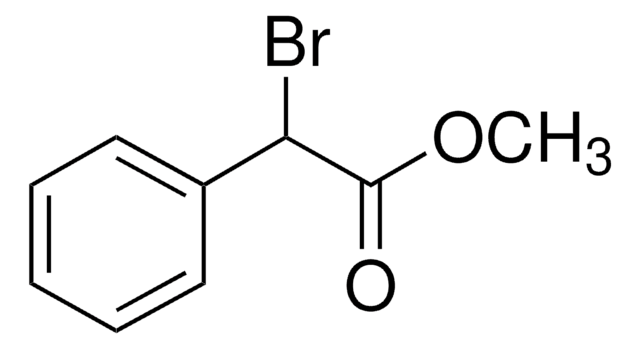Kluczowe dokumenty
E14403
Ethyl α-bromoisobutyrate
98%
Synonim(y):
Ethyl 2-bromo-2-methylpropionate
About This Item
Polecane produkty
Poziom jakości
Próba
98%
Postać
liquid
współczynnik refrakcji
n20/D 1.444 (lit.)
tw
65-67 °C/11 mmHg (lit.)
gęstość
1.329 g/mL at 25 °C (lit.)
ciąg SMILES
CCOC(=O)C(C)(C)Br
InChI
1S/C6H11BrO2/c1-4-9-5(8)6(2,3)7/h4H2,1-3H3
Klucz InChI
IOLQWGVDEFWYNP-UHFFFAOYSA-N
Szukasz podobnych produktów? Odwiedź Przewodnik dotyczący porównywania produktów
Opis ogólny
Zastosowanie
Hasło ostrzegawcze
Danger
Zwroty wskazujące rodzaj zagrożenia
Zwroty wskazujące środki ostrożności
Klasyfikacja zagrożeń
Acute Tox. 4 Oral - Eye Dam. 1 - Flam. Liq. 3
Kod klasy składowania
3 - Flammable liquids
Klasa zagrożenia wodnego (WGK)
WGK 3
Temperatura zapłonu (°F)
140.0 °F - closed cup
Temperatura zapłonu (°C)
60 °C - closed cup
Środki ochrony indywidualnej
Eyeshields, Faceshields, Gloves, type ABEK (EN14387) respirator filter
Wybierz jedną z najnowszych wersji:
Masz już ten produkt?
Dokumenty związane z niedawno zakupionymi produktami zostały zamieszczone w Bibliotece dokumentów.
Klienci oglądali również te produkty
Produkty
Atom transfer radical polymerization (ATRP) has emerged as one of the most successful synthetic techniques for the preparation of polymers with predetermined molecular weights, narrow molecular weight distributions, and high degrees of chain end functionalities.
ATRP polymerization, chain transfer agent, living polymerization, functional telechelic polymers
Find how atom transfer radical polymerization (ATRP) tools can be used for the synthesis of well-defined functionalized polymers.
ATRP jest skuteczną metodą precyzyjnej syntezy polimerów o kontrolowanej masie cząsteczkowej i wysokiej funkcjonalności końca łańcucha.
Protokoły
Polimeryzacja za pomocą procedur ATRP zademonstrowana przez grupę badawczą prof. Dave'a Haddletona z University of Warwick.
Sigma-Aldrich presents an article about the typical procedures for polymerizing via ATRP, which demonstrates that in the following two procedures describe two ATRP polymerization reactions as performed by Prof. Dave Hadddleton′s research group at the University of Warwick.
Nasz zespół naukowców ma doświadczenie we wszystkich obszarach badań, w tym w naukach przyrodniczych, materiałoznawstwie, syntezie chemicznej, chromatografii, analityce i wielu innych dziedzinach.
Skontaktuj się z zespołem ds. pomocy technicznej![Tris[2-(dimethylamino)ethyl]amine 97%](/deepweb/assets/sigmaaldrich/product/structures/695/792/ee0ff167-22a3-43a7-83a1-6c4908adf0ae/640/ee0ff167-22a3-43a7-83a1-6c4908adf0ae.png)

